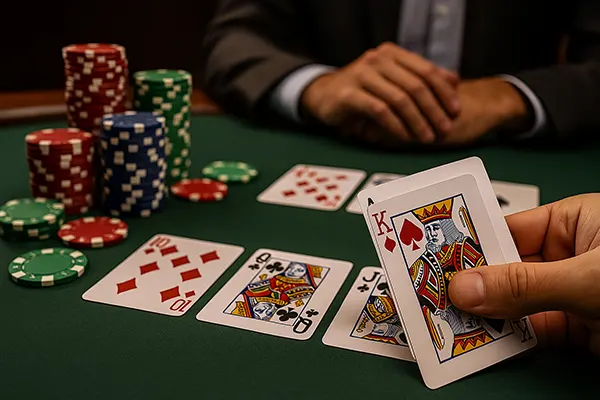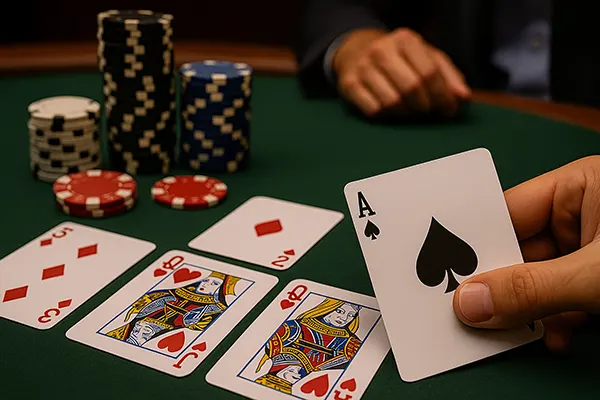
The Evolution of Poker Strategies: From Classic to Modern Approaches
Poker is a game that has been evolving for centuries, adapting to cultural changes and advancements in gameplay theory. From classic strategies rooted in fundamental tactics to modern approaches driven by statistical analysis and psychology, poker strategies have undergone significant transformation. This article explores the evolution of poker strategies, examining how traditional methods have given way to innovative techniques, shaping the way players approach the game today.
Classic Poker Strategies: The Foundations
Classic poker strategies are rooted in fundamental concepts that have stood the test of time. These methods prioritize understanding hand rankings, reading opponents, and employing basic betting tactics. Players of traditional poker variants, such as Texas Hold’em and Five-Card Draw, often rely on tight-aggressive play and cautious decision-making.
One of the key elements of classic strategies is hand selection. Experienced players understand the importance of entering the pot with strong hands while folding weaker ones. This disciplined approach minimizes losses and increases the chances of making profitable plays when the odds are favorable.
Positioning is another crucial aspect. Being in a late position allows players to gain valuable insights into their opponents’ actions, giving them a strategic advantage. Bluffing, although less frequent in classic play, is executed with caution and only when the situation strongly supports it.
Reading Opponents: The Art of Observation
In classic poker, reading opponents is an essential skill. Players observe physical tells and betting patterns to gauge the strength of their rivals’ hands. Subtle clues, such as nervous movements or changes in betting behavior, can reveal valuable information.
The art of observation also includes recognizing bluff attempts. Experienced players know how to identify inconsistencies in betting actions that indicate a possible bluff. This skill, honed over time, separates average players from true strategists.
Despite being a fundamental part of classic poker, the skill of reading opponents has diminished in importance with the rise of online poker, where physical tells are absent. Nonetheless, mastering this ability remains crucial in live games.
The Shift to Analytical Approaches
Modern poker strategies have evolved significantly with the introduction of data analysis and mathematical models. Advanced players now incorporate statistical analysis into their decision-making processes, relying on probabilities and expected value calculations to optimize their plays.
One prominent strategy that has emerged is the Game Theory Optimal (GTO) approach. GTO strategies aim to make a player unexploitable by balancing their betting patterns in a way that prevents opponents from gaining a long-term edge.
Another modern technique is exploitative play, where players analyze their opponents’ weaknesses and adjust their strategies accordingly. This adaptive approach contrasts with GTO’s balance-focused nature, offering flexibility against weaker opponents.
Data-Driven Decision Making
Modern poker players utilize software tools to analyze their own play and that of their opponents. These programs generate insights into betting frequencies, hand ranges, and optimal strategies for different situations. The use of databases to track opponents’ tendencies has become standard practice.
The rise of online poker has made data-driven approaches more accessible. Players regularly study hand histories to identify leaks in their strategy and develop counter-strategies against recurring opponents.
This analytical mindset marks a significant departure from the intuitive, experience-based methods of classic poker, highlighting the evolution of the game in a data-centric world.

Psychological Elements in Modern Poker
The psychological aspect of poker has gained greater recognition in modern strategies. Beyond analytical thinking, successful players understand the importance of maintaining a strong mental game, managing emotions, and staying resilient during losing streaks.
One psychological approach is tilt management. Tilt refers to emotional instability that leads to suboptimal play. Players who master their emotions remain calm under pressure, allowing them to make rational decisions even after setbacks.
Additionally, players use psychological manipulation to induce mistakes from their opponents. Techniques such as misleading table talk or strategic betting patterns can influence an opponent’s actions, leading them to make costly errors.
Bluffing: A Modern Perspective
While bluffing has always been a part of poker, modern strategies emphasize the importance of timing and context. Rather than relying solely on gut feelings, players calculate the probability of success before executing a bluff.
The use of balanced bluffing ranges ensures that bluffs are interspersed with value bets, making it harder for opponents to predict intentions. This nuanced approach minimizes the risk associated with bluffing and maximizes potential gains.
In online settings, where visual cues are absent, players rely on betting patterns and game flow to identify bluffing opportunities. This strategic shift reflects how modern poker has adapted to digital environments.



